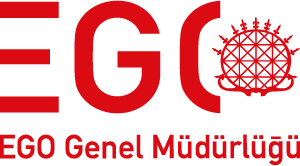Ankara.
Challenge
How to increase efficiency in e-bike field operations?
CURRENT SITUATION
In the city of Ankara, the existing electric bike sharing system includes more than 500 bikes, 40 charging stations, management, and end-user mobile applications. Bicycle charging stations are located at the metro exits. The implemented free-floating e-bike sharing scheme provides the availability of bikes at various stations within the system. Compared to the Station-based scheme, it represents the more flexible model by enabling users to pick up and drop off e-bikes at any desired station with available bikes or parking spaces. However, our system lacks a decision-support feature, making it incapable of automatically optimizing field operations.
Field operations consist of collecting, balancing, replacing batteries, on-site maintenance, returning to workshop etc. and these are done by carrying vehicles. Since such operations create the highest costs to the budget the route optimization of the vehicles is important and required for an efficient and smart management. Therefore, the goal is to establish an optimization system for the e-bikes field operations through an integrated software that includes parameters derived from the existing system such as location, charge status, availability of e-bikes. Sample visual scenario below.


DESIRED SITUATION
Solution
Hergele’s developed solution streamlines micro-mobility field operations for fleet operators via innovative route planning and optimisation features. The app automates tasks and provides real-time tracking, reducing operational costs. The solution also provides data to support strategic decision making to maximise fleet management efficiency.
Results
- Hergele integrated its solution into the existing operations applications of EGO Ankara, the city’s micro-mobility fleet operator.
- The solution was tested in collaboration with EGO Ankara, within a subset of the electric bike fleet.
- Hergele’s developed solution is streamlining micro-mobility field operations in Ankara, helping to reduce congestion, enhance fleet efficiency and improve the experience for both micro-mobility users and maintenance staff.





